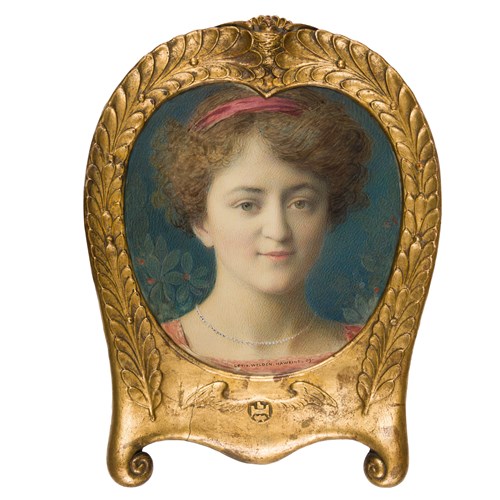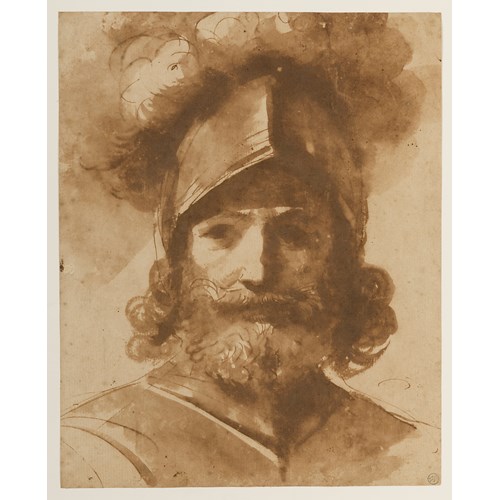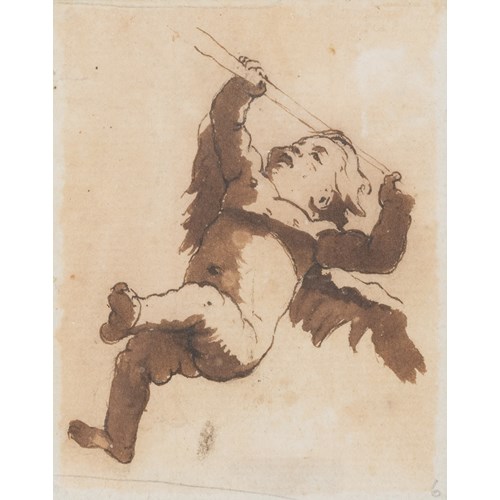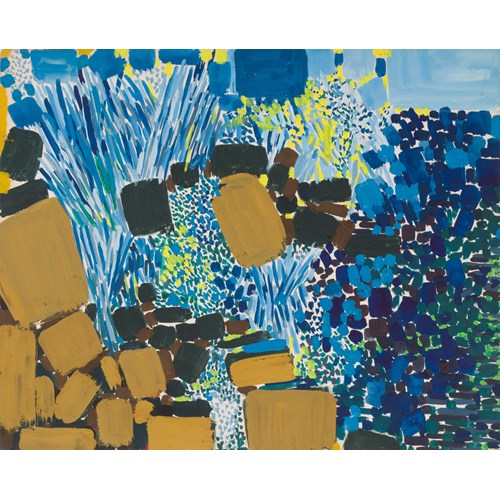Marketplace
A Seated Satyr, after Annibale Carracci
During his long stay in Rome, between 1723 and 1732, Edmé Bouchardon produced over five hundred drawn copies in red chalk of paintings and sculptures to be found in the churches and palaces of the Eternal City. (The Louvre alone holds 261 drawings by the artist after Antique, Renaissance and Baroque paintings, sculptures and frescoes in Rome.) As Édouard Kopp has noted, ‘Bouchardon’s numerous copies after painting and sculpture were far from strictly reproductive, but rather generally prompted by personal selection and interpretation. They reveal that his motives were much more ambitious than those of a mere student in training, as he sought to gain recognition as a learned draftsman in artistic and antiquarian circles…His extreme dedication, however, also amounted to a voracious form of collecting. His copies were not a series of unrelated, discrete studies. Instead, they were conceived as a whole, a kind of personal “paper museum”, as much as a repertoire of forms as a collection of artifacts.’ Bouchardon’s copy drawings, with their refined manner and elegant style, also greatly appealed to contemporary collectors such as Jean de Jullienne and the Comte de Caylus.
This large sheet is a copy after a seated satyr in Annibale Carracci’s extensive fresco decoration on the vault of the galleria of the Palazzo Farnese in Rome, executed between 1597 and 1601. The subject of the present sheet is one of two seated satyrs flanking a fresco of Hyacinth Born to the Heavens by Apollo, situated above a fictive canvas of Polyphemus and Galatea on the end wall of the room.
Bouchardon made a number of red chalk copies of paintings by Annibale Carracci and his studio, although these are relatively few in number in comparison to his more numerous drawings after works by Raphael and Domenichino. A smaller and less finished red chalk drawing of the same satyr in the Farnese Gallery, traditionally attributed to Bouchardon and showing more of the architectural elements surrounding the figure in the fresco, is in the Louvre. Annibale Carracci’s own preparatory drawing for the same satyr, drawn in black chalk on blue paper and displaying a number of differences from the final fresco, particularly in the physiognomy of the figure, is also in the Louvre.
This large sheet is a copy after a seated satyr in Annibale Carracci’s extensive fresco decoration on the vault of the galleria of the Palazzo Farnese in Rome, executed between 1597 and 1601. The subject of the present sheet is one of two seated satyrs flanking a fresco of Hyacinth Born to the Heavens by Apollo, situated above a fictive canvas of Polyphemus and Galatea on the end wall of the room.
Bouchardon made a number of red chalk copies of paintings by Annibale Carracci and his studio, although these are relatively few in number in comparison to his more numerous drawings after works by Raphael and Domenichino. A smaller and less finished red chalk drawing of the same satyr in the Farnese Gallery, traditionally attributed to Bouchardon and showing more of the architectural elements surrounding the figure in the fresco, is in the Louvre. Annibale Carracci’s own preparatory drawing for the same satyr, drawn in black chalk on blue paper and displaying a number of differences from the final fresco, particularly in the physiognomy of the figure, is also in the Louvre.
More artworks from the Gallery









